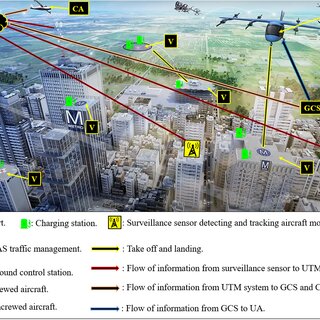Not Just Advanced Air Mobility, But Seamless Air Mobility
NASA engineers a solution to provide AAM for all
December 22, 2024 |

From a horse to a chariot, wagons to trains, cars to buses and airplanes, our transportation systems have evolved over millennia but rarely with any thought given to how we, as passengers, must navigate any or several of these systems to get us from Point A to Point B.
NASA engineers and specialists Husni Idris, David Wagner, Malina Slizik, and Abigail Glenn-Chase believe they have found a passenger-centric method to bring the myriad modes of transportation together to make accessing and using them, whether crosstown or cross country, less painful and more pleasurable.
To do this, NASA prepared the Passenger-Oriented Total Mobility Using Digital Engineering (PAX Mobility) Opportunity Concept Report (OCR). The report addresses the already complex, frustrating, and expensive challenges of traversing local, regional, and national transportation systems expected to become more complicated still with the adoption and integration of the autonomous system that is advanced air mobility.
The Passenger’s Pain Points
You don’t need to be a NASA professional to know what stands in passengers’ way of getting to their destinations. Among them:
• Cost
• Inconvenience
• Travel and wait times
• Lack of accessibility
• Lack of seamless connectivity
• Inequities
• Discomfort
• Complex trip planning
• Confusing per-mode costs and payment
• Difficulty comparing routing alternatives
But, you may need to be a NASA professional to devise a way to navigate through them. NASA calls the venue in which passengers find themselves “the wicked problem space.” It’s a transportation stew of multiple modalities, jurisdictions, infrastructure-centric model populated with vehicle-centric data. The solution needs to be not just integrating new travel modalities but harmonizing them. To be effective this system of systems, NASA says, must resonate with, and be reflective of the people it serves.
Traveler pain points
Some of the many travel difficulties that travelers regularly encounter are:
• Cost
• Inconvenience
• Travel and wait times
• Lack of accessibility
• Lack of seamless connectivity
• Inequities
• Discomfort
• Complex trip planning
• Confusing per-mode costs and payment
• Difficulty comparing routing alternatives
These problems persist despite technological advances. What is needed is a paradigm shift that transforms the problem and illuminates new solutions.
Several systemic issues are obstacles to widespread embracement of AAM:
- Gaps between different transportation modalities
- Underserved communities, such as Native populations
- Newly evolved lifestyle options such as remote work and remote healthcare
- Unbalanced use, underfunded, and underutilized modes of transportation
- Underutilized small airports which haven’t kept up with the electrification vital to AAM
- Poor interoperability between public and private transportation systems which, for example, prevent travelers from using a single ticket to complete their journey and systems that can’t or don’t share the passenger data enabling them to do so
- Aviation is often not considered by urban planners which hinders their ability to understand the trade offs and impact of their actions
- A siloed culture and disconnected operations impeding integration of AAM into the transportation network.
By moving passengers’ needs to the forefront of AAM integration PAX Mobility can move beyond project or proposal to where mobility for all is a reality for all.
Top 3 Takeaways
- The problem, NASA says, stem from the “wicked problem space.”
- Systemic issues are hindering the widespread adoption of AAM
- NASA has developed PAX Mobility, a plan to address the systemic issues standing in the way of AAM for all


